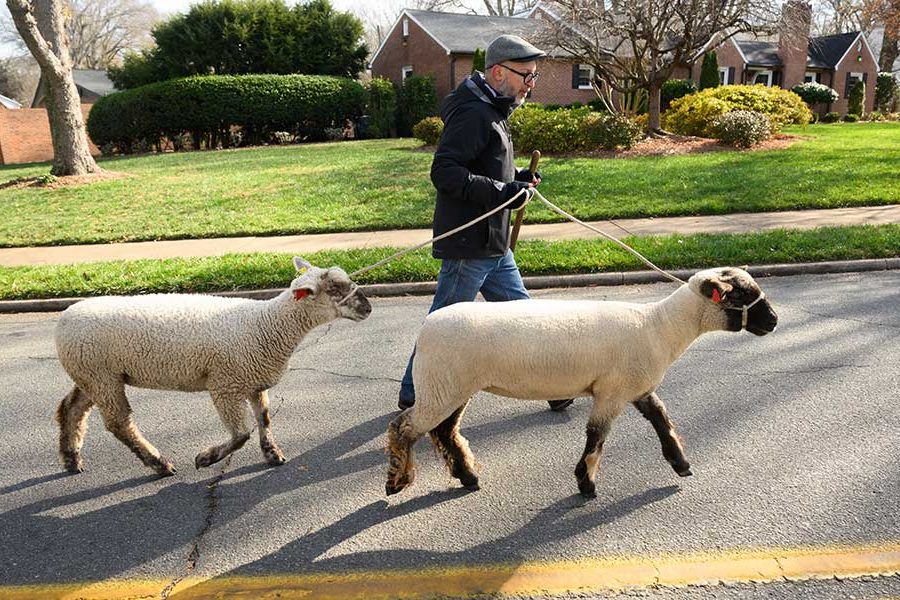Finding the next Picasso
Over spring break, seven students will be visiting art galleries in New York City from March 13-17 to select works of art for the University’s Student Union Collection of Contemporary Art. The buying program is believed to be the only one of its kind in the country, one where students are given the opportunity to make the final decisions about which works of art will be added to the University’s collection. The goal each year is for the students to purchase the best quality works with the funds available to them which reflect the current times. From Picasso’s L’Ecuyere (1960) to Jasper Johns’ Flags (1967-68) to Alex Katz’s Vincent with Open Mouth (1970), to Keith Haring’s Untitled (1982), to Christian Marclay’s, Memento (Hearing is Believing) (2008) the collection has grown to more than 160 pieces — paintings, prints, drawings, sculpture, and photography. Many of the artists represented in the collection are also represented in major collections across the world, according to Heather Childress, curator of the Wake Forest University art collection.
Students participating in the trip were selected through a competitive application process. They have been studying art for nearly four years and spent months reading art journals, researching trends in contemporary art and debating with one another about the artists they find most interesting. Slowly they narrow their focus to a select group of artists and works to view in New York. Once they hone in on artists whose work they like, they write to galleries asking to see what works are currently on the market by these artists. They review the works available before their trip, and during the trip, they view the top choices, negotiate with gallery owners and decide as a group which works will become the newest additions to the collection. “Over the course of their experience, students learn not only about choosing and purchasing contemporary art, they learn about themselves,” says art professor Jay Curley, who for the second time is traveling as an adviser on the trip. “When they start the process of preparing for the trip, they are overwhelmed and slightly intimidated by the New York gallery world. By the end, they are on their mobile phones walking through Chelsea bargaining with these same galleries.”
A Collection For Students
The University art collection provides students, faculty and staff with a unique opportunity to live with art, says art professor Joel Tauber, who is this year’s faculty trip mentor along with Curley.
“Through the art buying trip, the University brings art and culture to campus,” says Tauber. “At our liberal arts university, we are invested in developing ourselves as full people. Exposure to these works enriches the lives of everyone on our campus.” “Students grab lunch at Chick-fil-A and sit in Benson among works of art that have been recognized as significant works in their time. While some students simply enjoy the works for their aesthetic value, others find time to ponder the meanings, contradictions and challenges raised by the works they pass each day,” Curley says. While all of the students participating in the trip have a special interest in art, each brings a unique perspective and background. As they draw upon knowledge from other classes and from their personal experiences, they work together to keep the diverse interests of Wake Forest’s current students in mind. “We hope to bring back works that will stand out in our saturated environment,” says Curley. “We want students to look closely and slow down their perceptions in order to unlock meaning.”
The Collection: Past and Present
Mark Reece (’49), dean of men and College Union adviser, developed the idea for the trip 50 years ago, before the University even had an art department. In 1963 Reece, and then faculty members Edwin Wilson (’43) and J. Allen Easley and two students drove to New York City, explored the contemporary art galleries there, and came back with a dozen works of art for the University. Looking ahead to the next 50 years of the trip, Curley and Tauber hope to involve more students in the art buying process — developing a program to foster relationships between Wake Forest students and the artists of the purchased works, perhaps one in which the artists would visit Wake Forest and present their work in a student curated exhibition. “Perspective art students ask us about how they can become involved in the trip before they even enroll as students here,” says Tauber. “The trip has really become a part of the Wake cachet. And we’re looking forward to finding new ways to expand the experience University wide. ”
Categories: Arts & Culture, Experiential Learning
Media Contact
Wake Forest News
media@wfu.edu
336.758.5237



